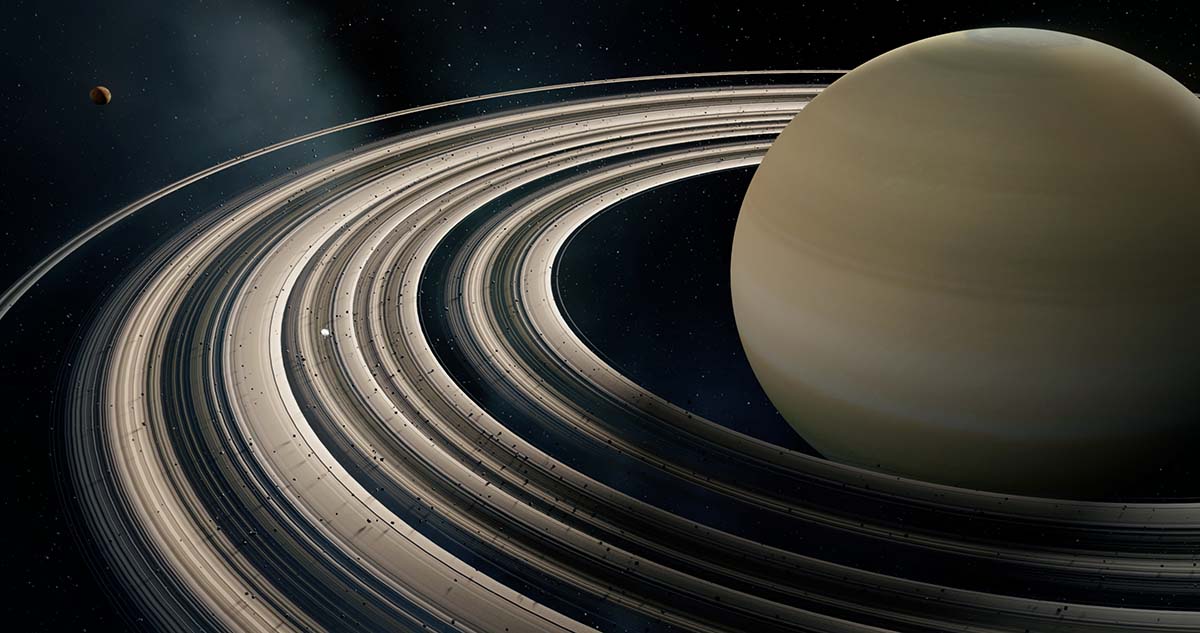The gas giant Saturn is the sixth planet from the Sun, and the second-largest planet in our solar system. The hydrogen planet is nearly ten times the radius of Earth. Saturn is recognizable by its beautiful ring system, which is believed to comprise of icy particles and dust made of moons, comets, and other celestial bodies torn apart by Saturn’s gravitational forces. Scientists believe that Saturn’s rings are disappearing relatively quickly.
It is believed that Saturn’s rings formed around four billion years ago, back when giant collisions used to shake up the Solar System more frequently. They were first observed by astronomer Galileo Galilei in 1610. The rings extend approximately 282,000 km from Saturn’s center. The rings are made up of little tracks, with the closer tracks orbiting at a faster rate than the tracks further away. Due to its orbit, a day on Saturn is just 10 and a half hours.
Cassini mission
Findings from NASA’s Cassini mission, which took place from 2004 to 2017, were released in May of this year. The study recorded insights into how long the rings have been around, and when they might vanish. The results, published in Icarus, conclude that Saturn’s rings are relatively young astronomically. The rings might have still been forming during the Jurassic era, supposedly. However, the Cassini mission illuminated the fact that the rings are losing many tons of mass each second.
Read more: Interstellar travel now possible, thanks to fusion-propelled rockets
James O’Donoghue, planetary scientist, astronomer, and science communicator, whose research focuses on atmospheres of giant planets, believes that Saturn’s rings are slowly falling in on themselves. The rings could soon resemble the darker rings of Neptune and Uranus.
A significant amount of material was observed flowing into Saturn around its mid-latitudes. It is believed that the material flowing into Saturn is mostly water, similar to the composition of the rings. However, there’s a possibility that some of the material might be tiny pieces of silicate rock.
Disappearing rings
Recently, a notable decrease in the density of electrons in Saturn’s atmosphere was recorded, particularly in certain regions where unexpected gaps appear. This depletion is due to a complex chain of chemical reactions, where neutral water interacts with charged electrons, resulting in reduced electron density.
This phenomenon, known as ‘ring rain,’ is having a notable impact on Saturn’s atmosphere. Interestingly, in 2017, the Cassini spacecraft discovered that around the equator, the inflow of material was approximately ten times greater than what we observed at the mid-latitudes.
By assessing existing data, researchers can predict that the rings will last 100 million to 1.1 billion years. O’Donoghue believes that, through seasonal supervision, along with James Webb Space Telescope imaging, more precision will help inform us.
For more worldwide news, click here.








